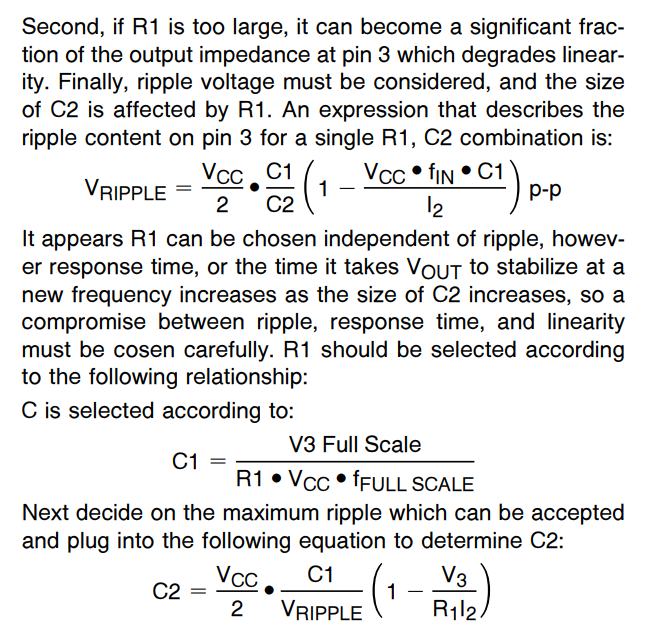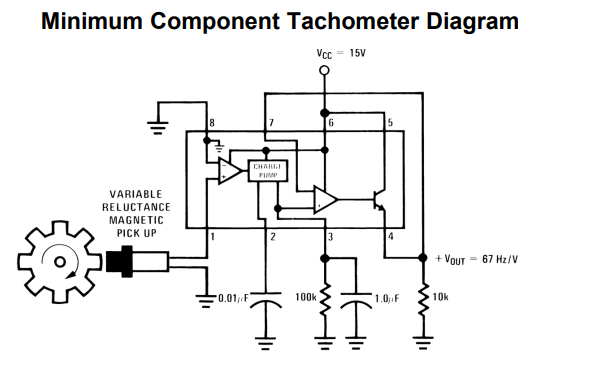Other Parts Discussed in Thread: LM2917-N
I am trying to get clarification on a couple different aspects of the device. I am planning on powering the device with a 5V source and the RPM signal will switch between 0V-5V with a maximum frequency of 835Hz (100RPM = 3.325Hz)
I would like to get confirmation if my component selection is correct, or if I should reevaluate my component values.
R1=100k
C1=12nF
Based on the values of R1 and C1, I calculate that I will be getting approximately 167Hz/V resolution. Are my calculations correct?
Second question is in regards to the response timing associated with selecting C2. I want to be able to measure the frequency with +/-100RPM accuracy (+/-3.3Hz). Based on that, I have a maximum tolerance for a 20mV-ripple. What kind of response time can I expect based on the max Vripple requirement that I have? The equations on the application note don't clearly state how to calculate the I2 value for any of the following equations.
There was no clear indication at to how much of a response time delay will be present in the minimum circuit shown on the datasheet.
It was also unclear if I could use a 0-5V RPM signal with a Vcc of 12V. Would that help reduce my Vripple?




